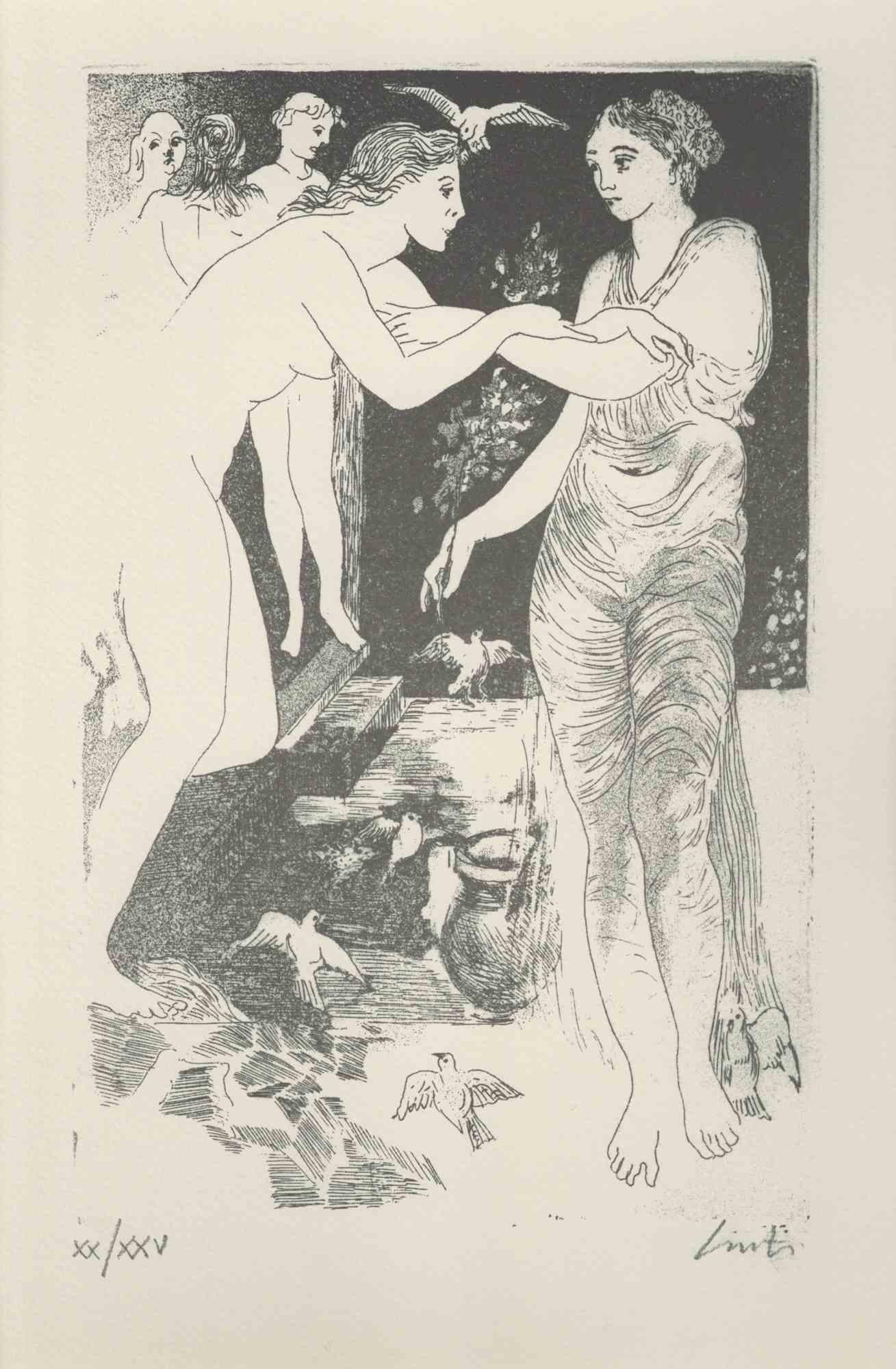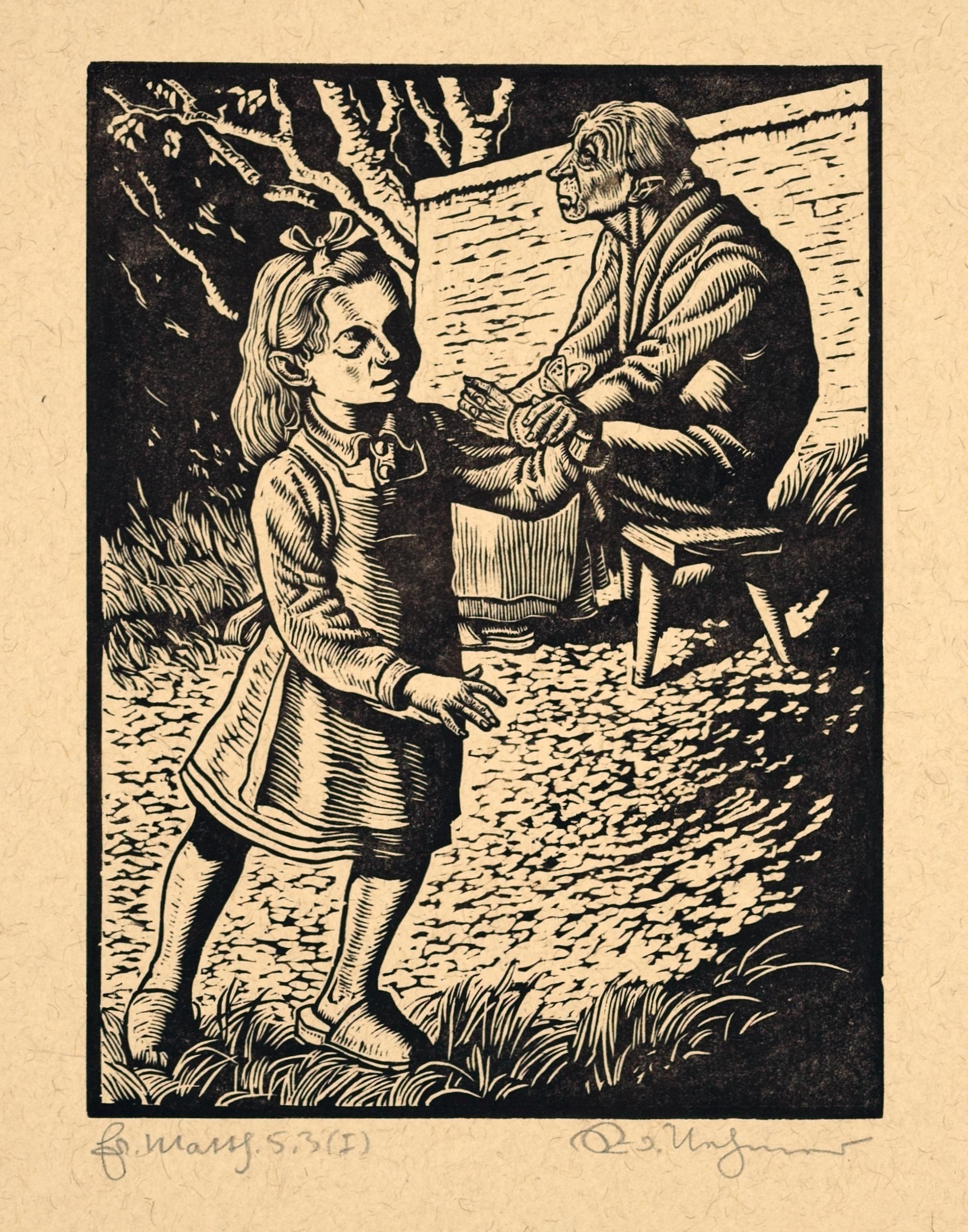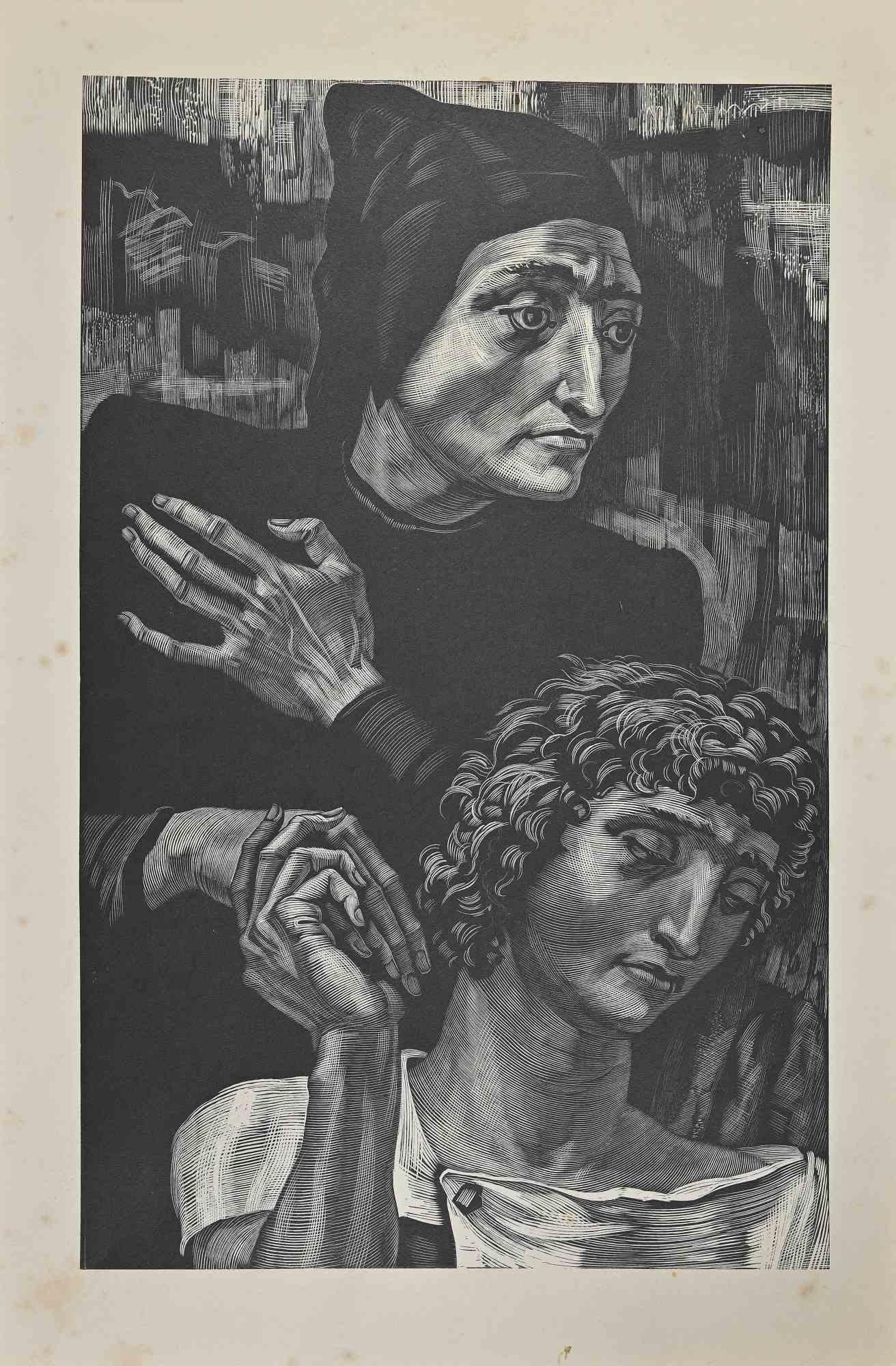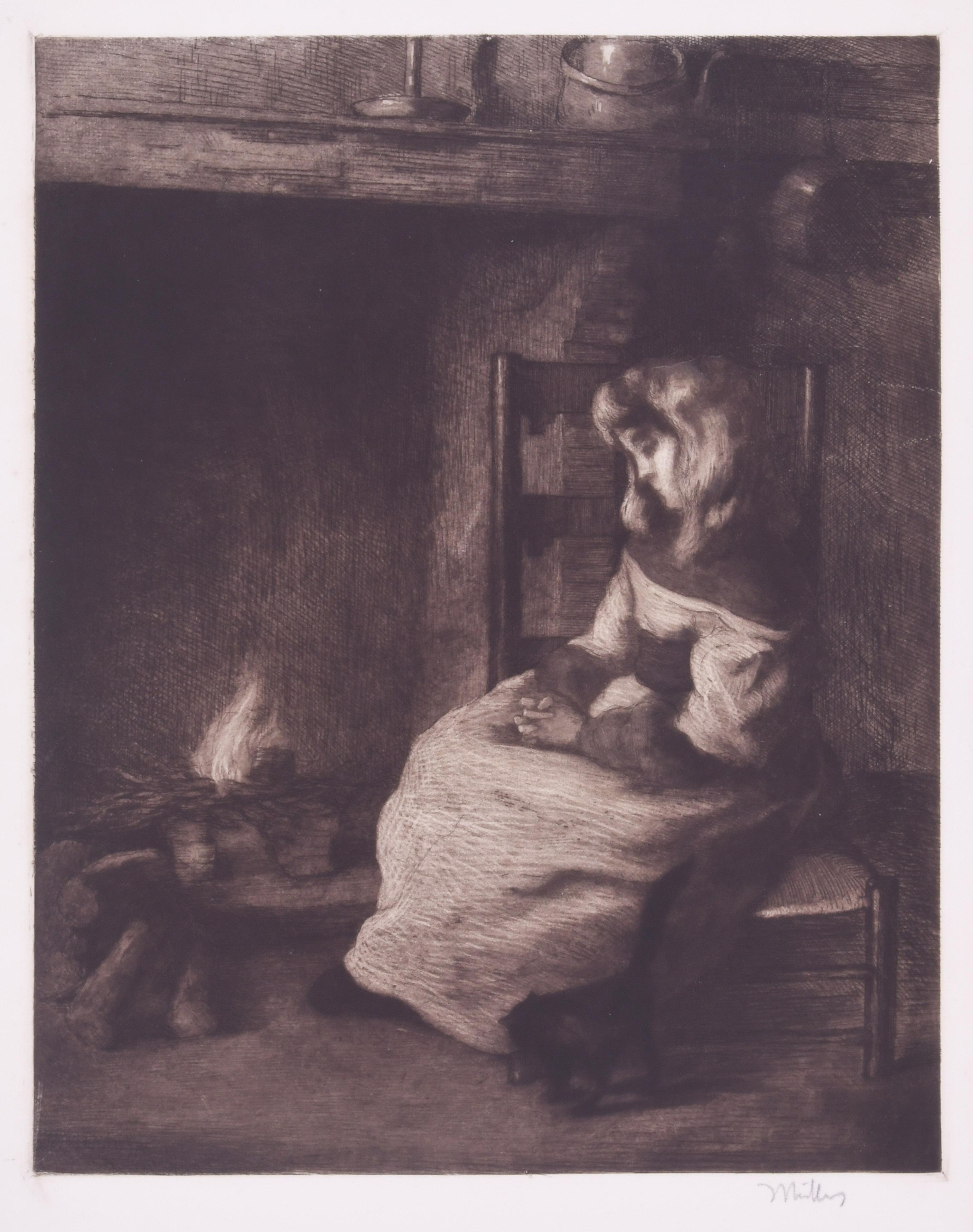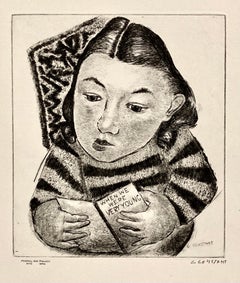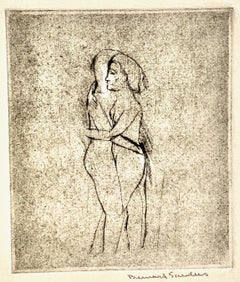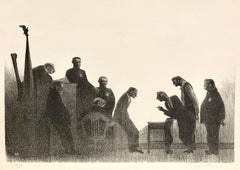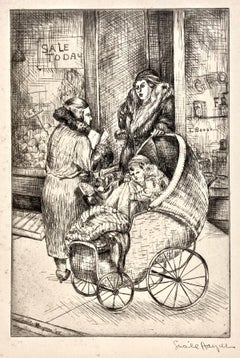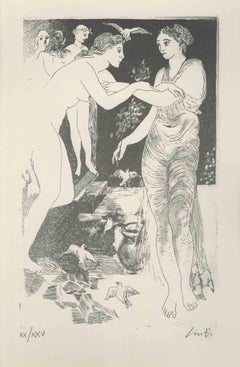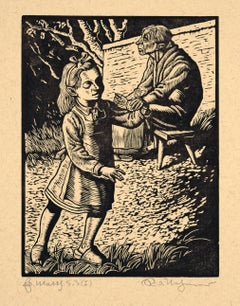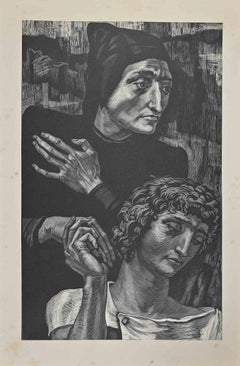Items Similar to Dan Burne Jones, Affection
Want more images or videos?
Request additional images or videos from the seller
1 of 5
Dan Burne JonesDan Burne Jones, Affection1930, about
1930, about
$500
£388.09
€442.17
CA$714.55
A$778.20
CHF 410.32
MX$9,465.20
NOK 5,159.75
SEK 4,839.42
DKK 3,301.81
About the Item
Dan Burne Jones is widely know as the author of the Rockwell Kent print catalogue raisonne. It's so interesting to see that he is a gifted wood engraver as well. Jones's own prints are scarce.
This intimate scene of little girl and her rabbit is made with great care. The technique demands fine line work for details such as hair and facial features, shading, and patterning. We've used the style 'American Modern' here but the everyday subject could also qualify as 'Aschcan.'
It is signed and titled in pencil.
- Creator:Dan Burne Jones (1908 - 1995, American)
- Creation Year:1930, about
- Dimensions:Height: 5 in (12.7 cm)Width: 4 in (10.16 cm)
- Medium:
- Movement & Style:
- Period:
- Condition:This work is really in very good condition. There are no issues at all and there are large margins.
- Gallery Location:New York, NY
- Reference Number:1stDibs: LU141028274912
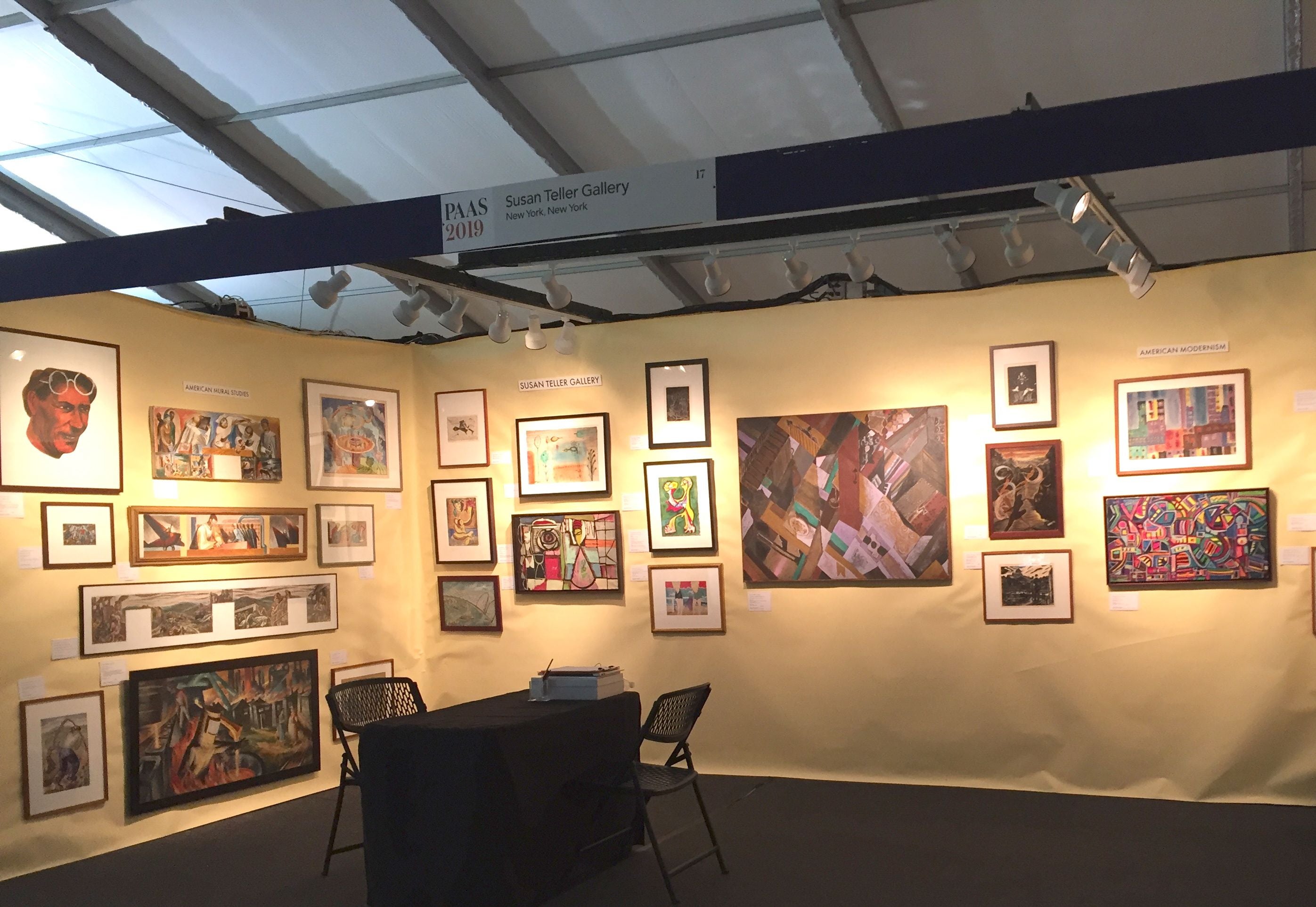
About the Seller
4.9
Gold Seller
Premium sellers maintaining a 4.3+ rating and 24-hour response times
Established in 1988
1stDibs seller since 2020
128 sales on 1stDibs
Typical response time: 3 hours
- ShippingRetrieving quote...Shipping from: New York, NY
- Return Policy
Authenticity Guarantee
In the unlikely event there’s an issue with an item’s authenticity, contact us within 1 year for a full refund. DetailsMoney-Back Guarantee
If your item is not as described, is damaged in transit, or does not arrive, contact us within 7 days for a full refund. Details24-Hour Cancellation
You have a 24-hour grace period in which to reconsider your purchase, with no questions asked.Vetted Professional Sellers
Our world-class sellers must adhere to strict standards for service and quality, maintaining the integrity of our listings.Price-Match Guarantee
If you find that a seller listed the same item for a lower price elsewhere, we’ll match it.Trusted Global Delivery
Our best-in-class carrier network provides specialized shipping options worldwide, including custom delivery.More From This Seller
View AllGeorge Constant, When We Were Very Young
Located in New York, NY
The Greek-American artist George Constant is known for his modernist approach to traditional subject matter. This portrait of a young woman holding a book titled "When We Were Very Young...
Category
1930s American Modern Figurative Prints
Materials
Drypoint
Bernard Sanders, (Lovers)
Located in New York, NY
Clearly Sanders (1906-1967) was a master at these minimalist figurative prints. It's all about atmosphere and tension.
Perhaps reflecting the print here, (Lovers), he, in fact, w...
Category
Early 20th Century American Modern Interior Prints
Materials
Drypoint, Etching
Alfred Bendiner, Sweet Innocence
By Alfred Bendiner
Located in New York, NY
No matter the seriousness of the subject, everything is always beautifully drawn on the lithographic stone by Bendiner, but in this instance the negative space is exploited amazingly.
This courtroom...
Category
1930s American Modern Figurative Prints
Materials
Lithograph
Lucile Haynes, (Two Women with Child in Baby Carriage)
Located in New York, NY
It's clear to me that that baby carriage is so beautifully drawn that it could be re-constructed from here if necessary.
Without really knowing anything about Lucile Haynes I'm sure...
Category
1930s Ashcan School Figurative Prints
Materials
Etching
Alfred Bendiner, Flic et Bonne (Gendarme and Nursemaid)
By Alfred Bendiner
Located in New York, NY
The world was Bendiner's oyster, but here he shows us a all we need in a small corner of Paris. It's charming and safe: the 'Flic et Bonne' (gendarme and nursemaid) are together, goi...
Category
1950s American Modern Landscape Prints
Materials
Lithograph
Fiske Boyd, The Hay-Meadow
Located in New York, NY
Boyd was a master printmaker. This wood engraving is a marvel of open space.
There may have been a horizontal crack in the block. There's a disconnect running across the center. At...
Category
Mid-20th Century American Modern Landscape Prints
Materials
Woodcut
You May Also Like
Omaggio a Bunes Jones (Tribute to Burne Jones)-Lithograph by Adolfo Loreti-2001
Located in Roma, IT
Lithographic reproduction of the original etching.
Hand signed. Passepartout included.
Edition of 25 prints in Roman Numerals.
Category
Early 2000s Contemporary Figurative Prints
Materials
Lithograph
Blessed are the spiritually poor / - The Abundance of Poverty -
Located in Berlin, DE
Rudolf Nehmer (1912 Bobersberg - 1983 Dresden), Blessed are the spiritually poor, 1948. Woodcut on yellowish wove paper, 20 cm x 15 cm (image), 45 cm x 30 cm (sheet size), signed “Ru...
Category
1940s Realist Figurative Prints
Materials
Woodcut
Beauty - Original lithograph - 1897
By Edward Burne-Jones
Located in Paris, IDF
Edward Burne-Jones
Beauty, 1898
Original lithograph (Champenois workshop)
Printed signature in the plate
On vellum, 40 x 31 cm (c. 16 x 12 in)
INFORMATION: Lithograph created for t...
Category
1890s Art Nouveau Portrait Prints
Materials
Lithograph
The Compassion - Etching - Early 20th Century
By Albert Decaris
Located in Roma, IT
The Compassion is an etching realized by Albert Decaris in the Early 20th Century.
In good conditions with some foxing.
The artwork is presented through deft strokes, the expressi...
Category
Early 20th Century Modern Figurative Prints
Materials
Etching
Blessed are the pure in heart / - The Vision of the Child's Eyes -
Located in Berlin, DE
Rudolf Nehmer (1912 Bobersberg - 1983 Dresden), Blessed are the pure in heart, 1948. Woodcut on yellowish wove paper, 17.8 cm x 15.4 cm (image), 35 cm x 25 cm (sheet size), signed “R...
Category
1940s Realist Figurative Prints
Materials
Woodcut
L'Angellus
By Alfredo Müller
Located in Fairlawn, OH
L'Angellus
Etching, engraving and acquatint on Arches paper, 1902
Signed lower right by the artist (see photo)
This is a first state impression printed in a brown/black ink, one of ...
Category
Early 1900s Art Nouveau Figurative Prints
Materials
Etching
More Ways To Browse
Lloyd Kiva
Lobster Telephone
Norbertine Bresslern Roth
Owl Woodblock Print
Picasso Bird Lithograph
Picasso Bull Plate
Picasso Chien
Picasso Dove Lithograph
Picasso Lithograph Gold
Picasso Lithograph Owl
Picasso Print Dove
Poster Aesthetic Vintage Art
Prairie Dog
Signed Duck Art Prints
Simon Bussy
Strato Lounger
Tete De Taureau
Tortoise And Hare Vintage
